A sticky-tape dispenser, dated 2002, is one of the star objects of one of our most ambitious touring exhibitions, Wonder Materials: Graphene and Beyond, which tells the story of how two University of Manchester physicists ushered in a new age of 2D materials distinguished by their extraordinary composition and the thickness of one atom.
Now, as the exhibition continues its run at the Hong Kong Science Museum, PhD student Robbie Sinclair, Dr James Suter and Prof Peter Coveney at The Centre for Computational Science, University College London reveal today in the journal Advanced Materials why this famous roll of sticky tape was required to make graphene, the first wonder material.
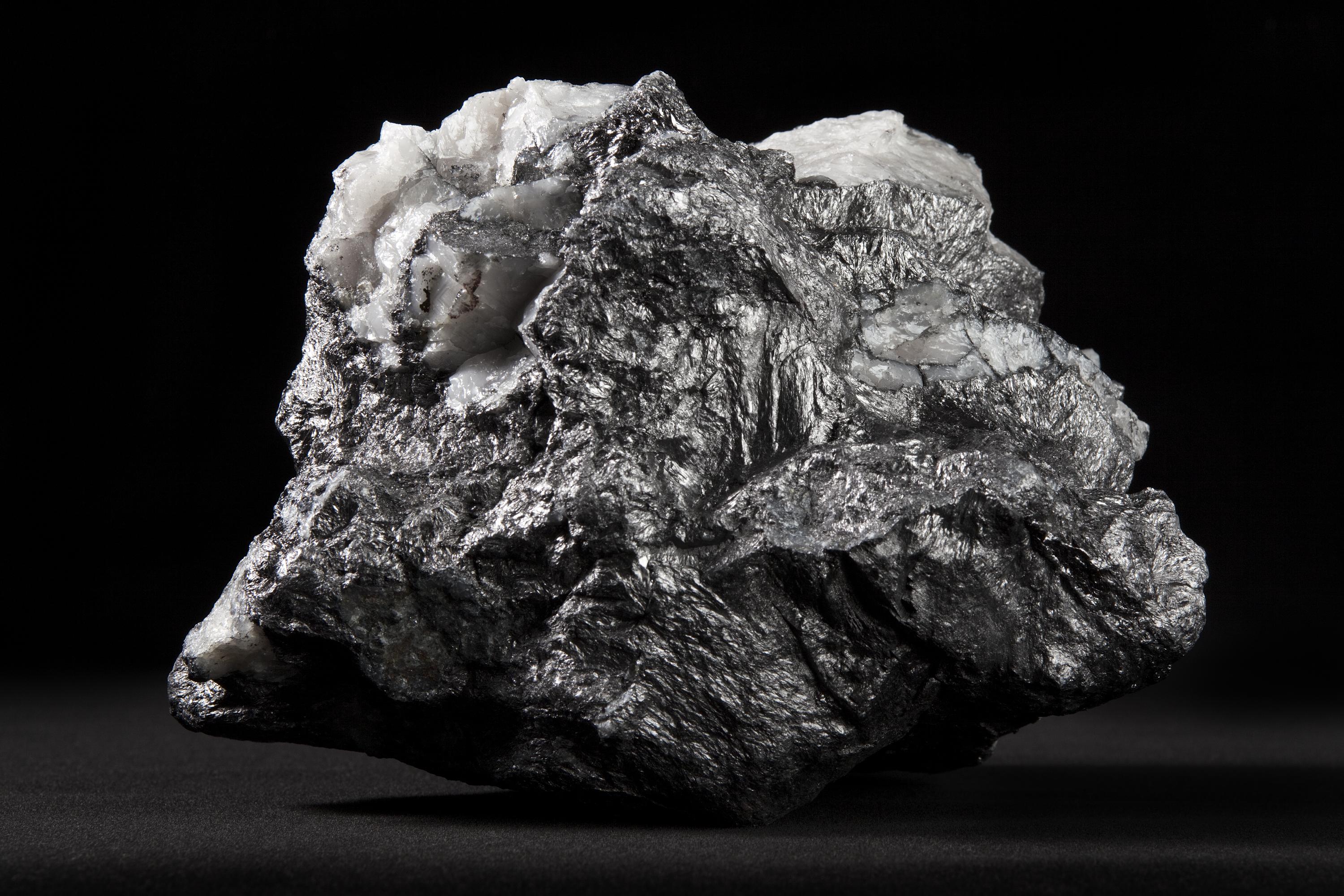
© The Board of Trustees of the Science Museum
When I discussed his ‘random walk’ to the discovery of graphene and the resulting 2010 Nobel Prize with Andre Geim, he began with the work by his first PhD student, Da Jiang. In 2002, Geim asked to take a piece of graphite, the stuff of pencils, and isolate the thinnest sliver he could. He wanted to study a two-dimensional sheet of carbon atoms that had long been posited by theorists and was predicted to have fascinating electronic properties, but had never been seen.
After Da Jiang had reduced the graphite to dust, Geim’s Ukrainian postdoc Oleg Shklyarevskii had a better idea: why not use Scotch tape, which physicists used to clean graphite?
When they studied used tape, they found it was coated with ultrathin graphite: they knew that if they could get below 10 or so atomic layers it would become transparent, which raised Geim’s hopes that graphene could be made.
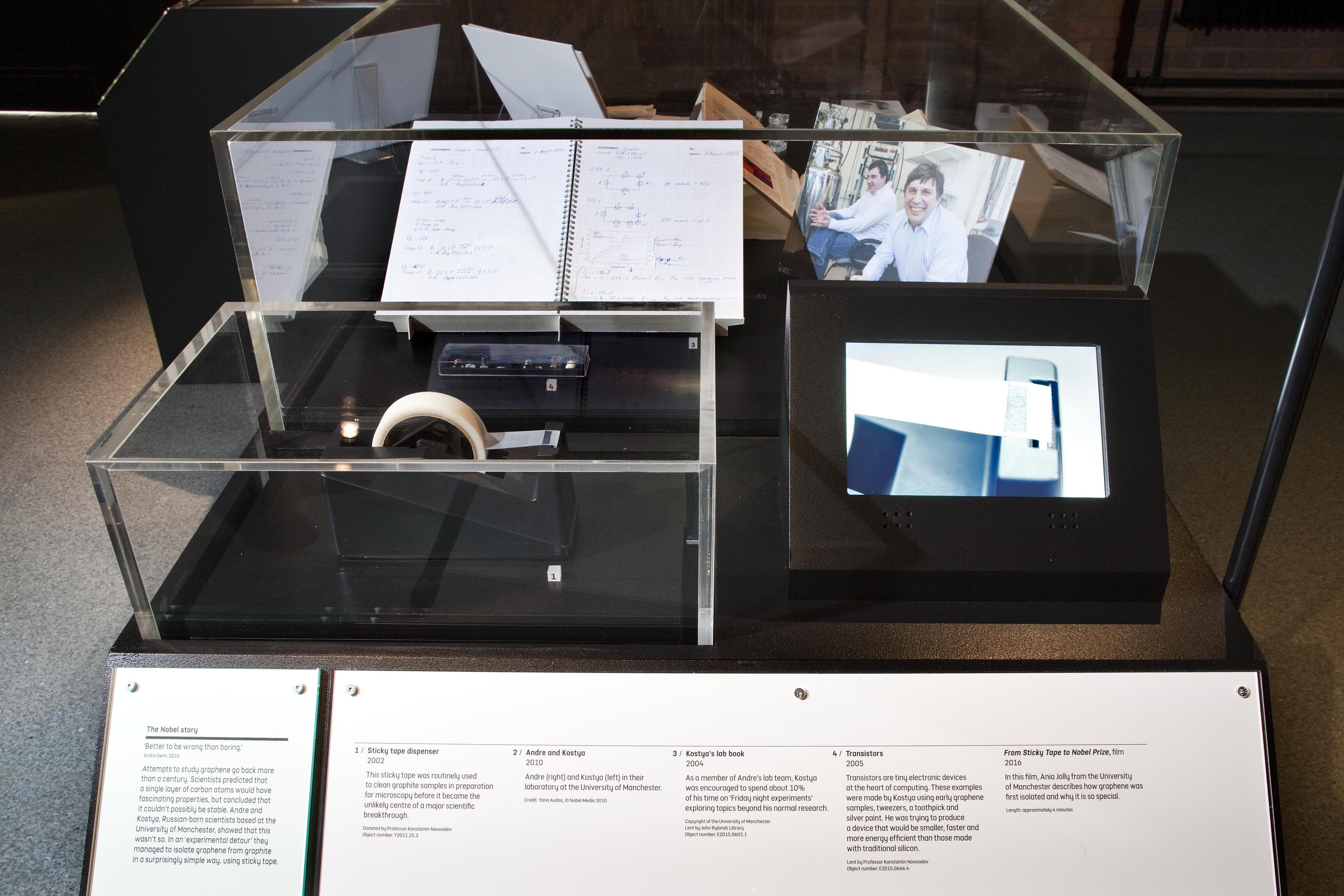
Here his fellow Nobelist Kostya Novoselov enters the story. Lo and behold, after around a year or so, they managed to isolate a hexagonal lattice of carbon atoms. The flat, parallel sheets of carbon atoms in the graphite of pencil lead could indeed be peeled apart to yield a single atomic layer with remarkable properties that promise myriad uses.
Now for the first time, the University College London team has successfully modelled the way that graphene sheets cling together in graphite, revealing why sticky tape is so good at prising them apart.
They are confident their model is correct because, as Sinclair explained, they have run their model in a supercomputer to simulate some remarkable experiments conducted in 2015 at Lawrence Berkeley Laboratory in Berkeley, California, where flakes of graphene skittering around on a graphite surface were studied using a special microscope with atomic resolution, called a Scanning Tunnelling Microscope.
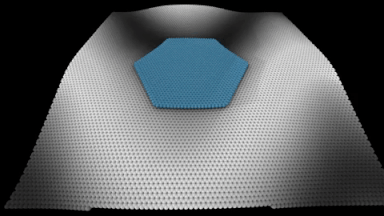
The microscope has a tip that can be used to push flakes of graphene around. They slide around like pucks in air hockey and, though the microscope can’t see this in real time, it can reveal where they end up.
In this way, they found that the 2D flakes only come to rest when the atoms in the graphene neatly line up with the atoms below, like stacking egg boxes, in what the chemists call a ‘commensurate state’. However, the lower the temperature, the further the flakes can travel because the underlying layer is smoother and less disturbed by jiggling caused by heat energy.
Newton’s laws can be used to predict these movements, even though the collisions between graphene scraps are ‘weird’: Dr Suter explained how they can ‘slither over each other, it is bizarre.’ Using a supercomputer and a virtual model of graphene, they got a good match with the observations made by the team in Berkeley.
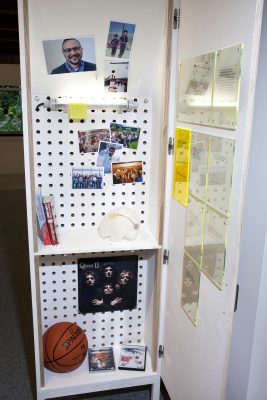
As a bonus, their computer model shows why sticky tape is so good for peeling them apart, explained Prof Coveney. Peeling a layer demands only 40 per cent of the energy of shearing, rather like peeling egg boxes apart with a vertical motion is easier than pulling one horizontally across another when they are neatly stacked.
‘If shearing, then you get held up by this egg carton configuration. But if you peel, you can get them apart much more easily. The polymethyl methacrylate adhesive on traditional sticky tape is ideal for picking up the edge of the graphene sheet so it can be lifted and peeled.’ he explained.
‘The most remarkable thing here is that, despite the gazillions of publications there have been on graphene since its discovery, no one has bothered to ask how it interacts with itself over meaningful (atomic) length and time scales.’ added Prof Coveney.
‘The one reason above all others why the material is difficult to use is because it is hard to make,’ he added. ‘Even now, a dozen years after its discovery, companies have to apply sticky tape methods to pull it apart, as the laureates did to uncover it; hardly a hi-tech and industrially simple process to implement.’
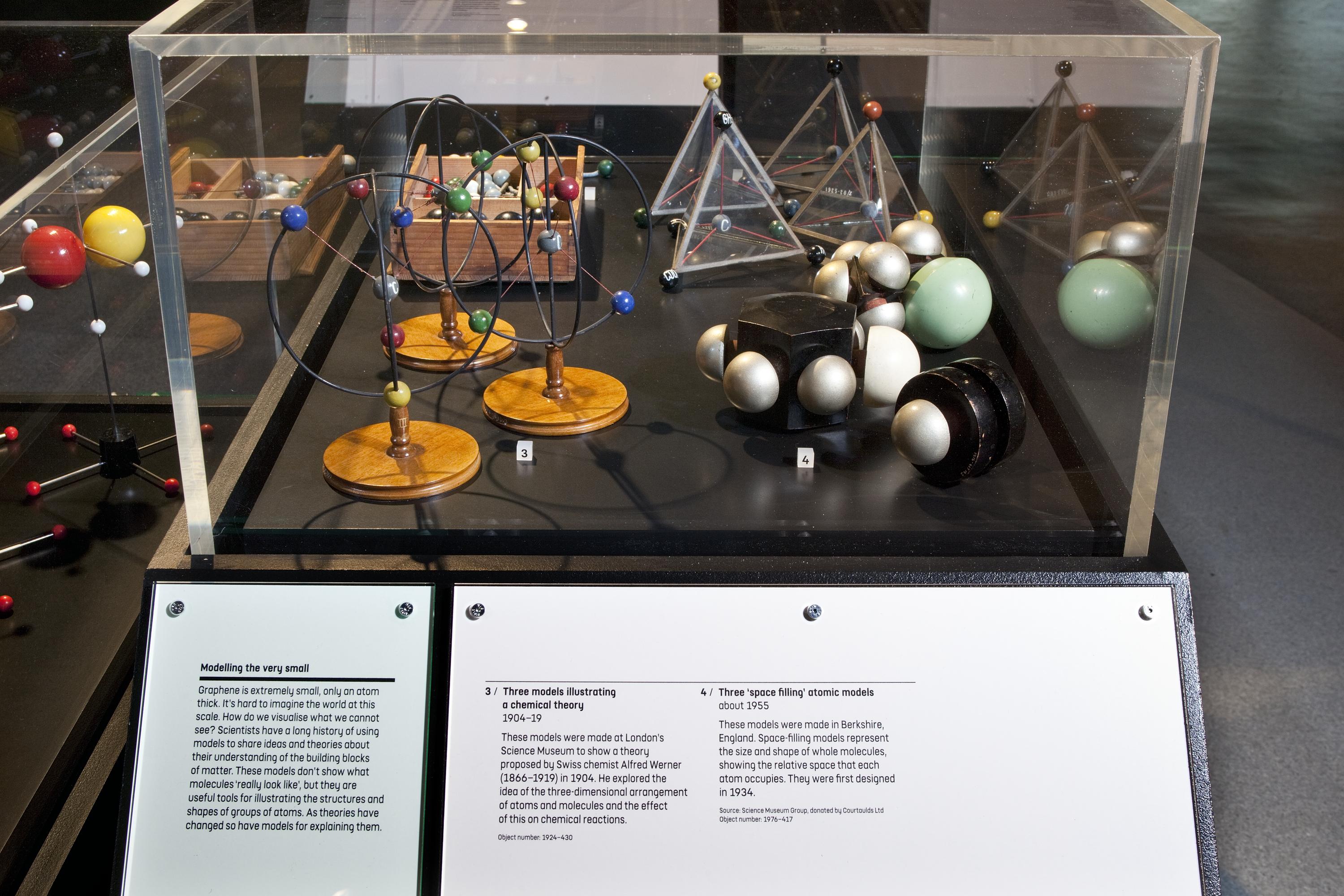
‘So, we say that now we’re poised to be able to assist experimentalists to figure out how to prise it apart, or make it to order,’ said Prof Coveney. ‘That could have big cost implications for the emerging graphene industry.’
Around 270,000 people saw Wonder Materials: Graphene and Beyond at the Museum of Science and Industry, Manchester, and so far more than 60,000 have seen the exhibition in Hong Kong, which runs until 18 April, and then continues on tour.